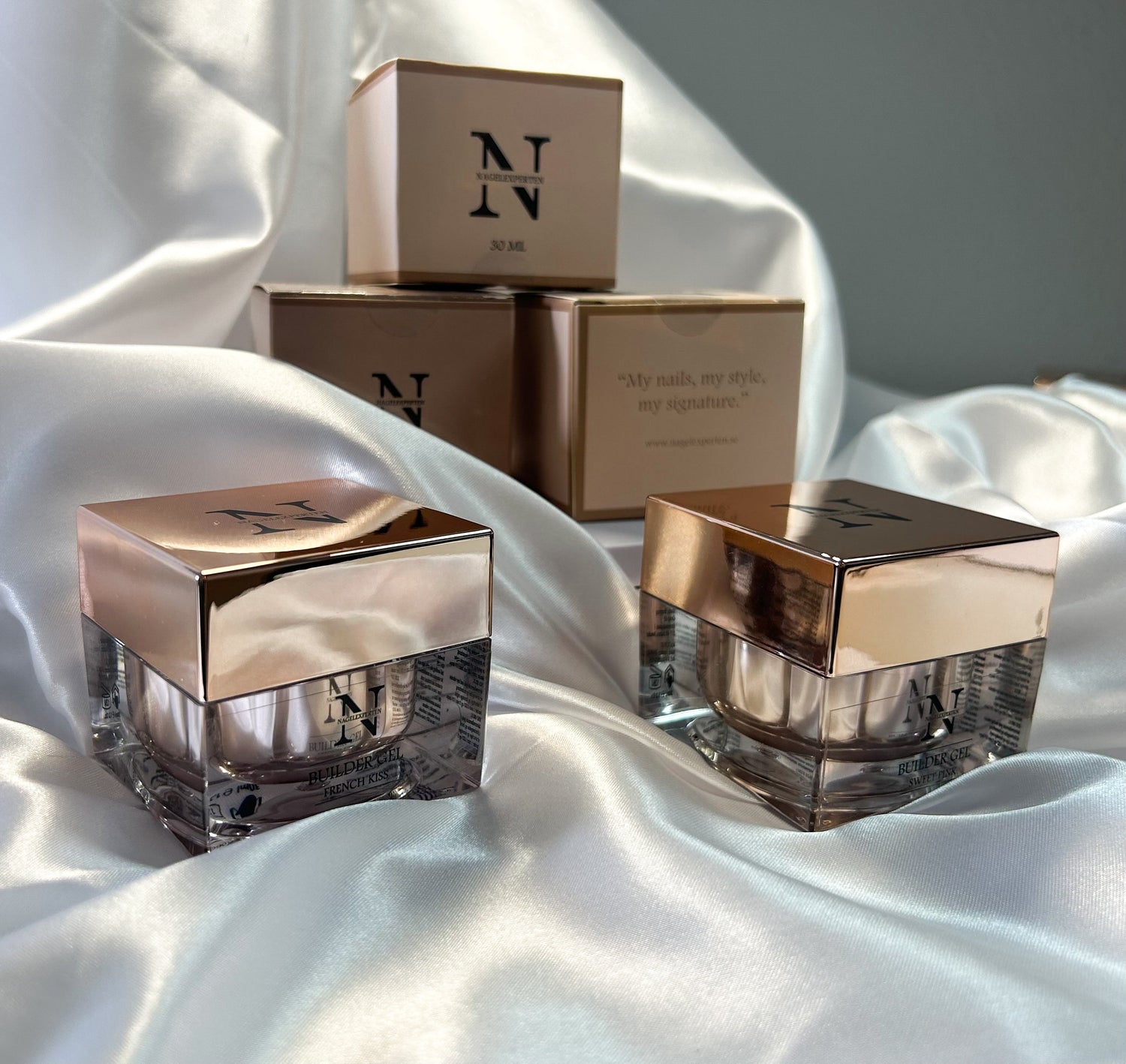Possible causes of stripes & lines on natural nails
Nail ridges, ridges or furrows are longitudinal lines or grooves that run along the nail plate. These lines can vary in depth and are caused by various factors. Understanding why they occur, what symptoms they cause and how they can be treated is crucial for proper nail care and to determine whether and which artificial nail products can improve the appearance of the nail.
Symptoms of nail grooves, ridges, or furrows
The main symptom is visible longitudinal lines or grooves on the nail surface. These can be subtle or more prominent, especially on longer nails. In some cases, small "pearl-shaped" defects may appear on the nail plate, which may indicate a more noticeable change. These nails are often hard and, as long as they do not have open cracks, can be improved with artificial nail products.
For people with these nail problems, permanent artificial nail products that require refilling, such as rubber base, acrylic or builder gel, are recommended. Soak-off products should be avoided as removing these can cause further damage to the already ridged nails, which often becomes visible only upon the next product removal.
Possible causes of nail ridges or nail stripes
-
Aging – With age, nail growth changes and can develop ridges, stripes, or furrows.
-
Trauma or injury – Damage to the nail bed can result in lines or grooves as the nail grows out.
-
Nutritional deficiencies – Lack of essential vitamins and minerals can affect nail health and lead to ridges.
-
Underlying health problems – Certain medical conditions can cause ridges, and their appearance can change over time depending on the health condition.
Who is affected by nail ridges?
Nail ridges can affect people of all ages but are more common in adults. The condition is not linked to any specific gender or ethnic group.
How can nail therapists help?
As a nail therapist, you can play an important role in managing and improving the appearance of ridged nails. Here are some guidelines:
Important Care Instructions
| Do this | Avoid this | Recommended Product | Refer to Doctor |
|---|---|---|---|
| Keep your nails clean | Do not sand away grooves with a hand or electric file. | Acrylic, Hard Gel or BIAB | If the nail plate is infected |
| Apply permanent artificial nails after checking that there are no signs of hyperkeratosis behind the free edge | Do not roughen or file the nail plate before application – use a good nail cleanser and primer | ||
| Regular refills and maintenance with nail oil and lotion |
Important Contraindications
-
If the client is undergoing chemotherapy , no nail products should be applied without approval from a physician.
-
If nail fungus is suspected, a test should be performed before applying any artificial nail product.
By following this advice, you as a nail therapist can help clients maintain healthy nails while gently improving their appearance.

